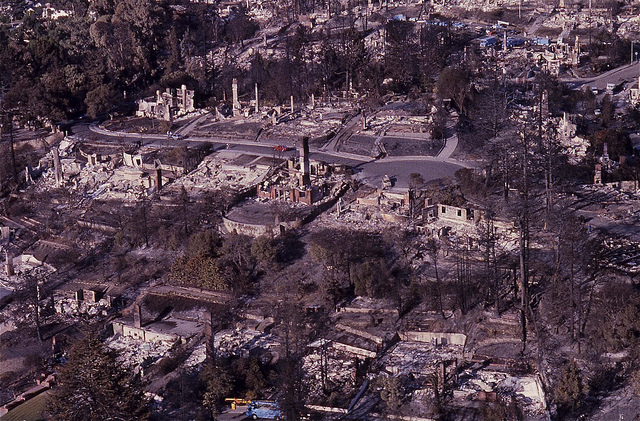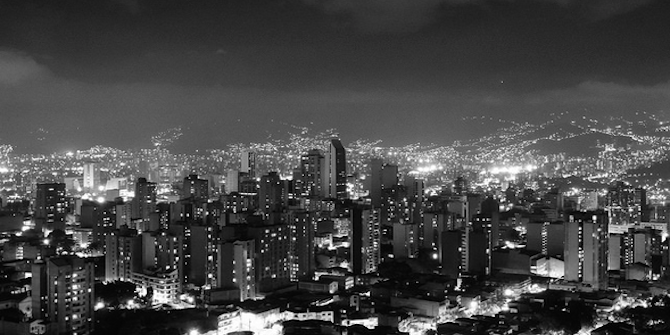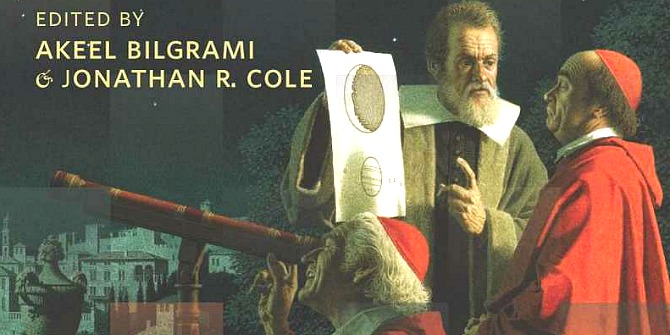
Bringing together an interdisciplinary team of scholars, this book seeks to illustrate how and why cities contain a mosaic of vulnerable human and ecological communities. Case studies ranging across various international settings reveal how “urban vulnerabilities” is an effective metaphor and analytic lens for advancing political ecological theories on the relationships between cities, nature and development. Oliver Cowan finds provocative perspectives on a wide range of urban issues.
 Cities, Nature and Development: The Politics and Production of Urban Vulnerabilities. Sarah Dooling and Gregory Simon. Ashgate. February 2012.
Cities, Nature and Development: The Politics and Production of Urban Vulnerabilities. Sarah Dooling and Gregory Simon. Ashgate. February 2012.
The 2013 NFL Superbowl was held in New Orleans, Louisiana. Alongside the dominant sporting narratives and controversy found in the media throughout the build-up was the frequent assertion that staging the event meant New Orleans was ‘back in business’. Given the city’s status as a go-to reference for urban vulnerability, this illustrates some of the key themes presented in this edited volume, Cities, Nature and Development: The Politics and Production of Urban Vulnerabilities. Its 10 chapters show how the socio-ecological nexus of contemporary urban life produces, sustains and responds to urban vulnerability. In the case of New Orleans the question that might therefore be posed is just who it is back in business for, and for how long?
Vulnerability is presented as both an epistemological tool and an ontological reality; a way of making sense of the fragility of urban life, and an urgent, somewhat anxious focus for future sustainability. The book is divided into three conceptual sections, and each chapter makes its case by investigating urban vulnerability through a case-study approach that has at its heart the confluence of people and place. In recent years economic and environmental crises have increasingly impacted upon everyday lives, although the former has tended to dominate political agendas. As the book’s editors, Sarah Dooling and Gregory Simon present the complex interplay of political, social, cultural and ecological urban spheres as key to understanding what vulnerabilities are, how they are produced and what can be done about them.
The first section considers the central question of how urban vulnerabilities are produced. In doing so it highlights discrete phases of socio-economic urban development, culminating in neoliberal post-industrialism. Gregory Simon presents an account of the 1991 Oakland Hills Firestorm, which claimed 25 lives and destroyed over 6km2 of inhabited land at a cost of an estimated $1.5 billion. Wildfires are often framed as a terrifying portent for more and more urban dwellers if the globe warms as expected. However, Simon is more concerned with the past through an ‘historical-relational’ approach to understanding vulnerability. Conventional approaches, he argues, see it as ‘a passive condition, outcome or social-ecological inscription’ (p.29). In Oakland Hills, building and vegetation density, housing materials, inaccessible roads, steep terrain, dry winds and drought conditions are thus identified as the main catalysts of the catastrophe.

Such factors are significant, yet Simon identifies several ways in which human activity can shape landscapes of susceptibility, and in so doing provides deeper insight into how vulnerability is produced. The shift in the area’s economic base from timber-logging to real estate speculation (illustrated through the consequential replacement of native Redwood species with the more pyro-volatile Eucalyptus) created a tinderbox with closely packed wooden houses, made inaccessible by their reliance on the original ‘logging roads’. Coupled with the economic and political implications relating to an increasingly suburban populace, the chapter highlights how ‘vulnerability accumulates and gains momentum over time’ (p. 41). For Simon, then, vulnerabilities are not static and fixed but dynamic and differential in who and where they impact.
The second part of the book extends understanding of urban vulnerability by providing examples of how it can develop despite – indeed because of – actions intended to mitigate its impact. The spectre of neoliberalism looms large, casting a shadow over fundamental aspects of urban existence. Julian Ageyman and Benjamin Simons discuss food vulnerability, where attempts to bypass global food markets through shifts towards ‘the local’ tend to benefit narrow sections of society, increasing precarity for others. Sarah Dooling describes how attempts to sustain and secure an ecological aesthetic (i.e. urban green space) exclude and endanger the most vulnerable residents of Seattle.
Perhaps the most unsettling corollary of urban development relates to climate change and peak oil. Kelvin Mason and Mark Whitehead discuss Climate Camps and Transition Towns as sites in which a range of risks, insecurities and possibilities (both positive and negative) reside. In their chapter they invoke the spatial theory of Henri Lefebvre and Doreen Massey, alongside the urban polemic of Rebecca Solnit, Naomi Klein and Mike Davis, in discussing the conceptual and everyday spaces of urban vulnerability. They describe their experiences of Grow Heathrow, a hybrid of the more overtly political Climate Camps and the more quotidian, adaptive and responsive culture of the Transition movement. It is both an occupation of a site by activists in order to challenge the political orthodoxy on climate change (symbolised by the proposed third runway at Heathrow Airport), and an example of how communities can adapt to low-carbon, sustainable living. The chapter shows how attempting to address vulnerability can itself become a vulnerable endeavour; raising awareness increases feelings of insecurity, and involvement in activism often leads to violent physical clashes with authority, as well as different kinds of attacks from climate sceptics.

This chapter raises many important points relating to urban vulnerability. The city is seen as both problem and solution; years of cheap oil have skewed the scale of urban living, and yet changes in how we inhabit cities hold the key for increasing resilience. In discussing vulnerability it is impossible to ignore the notion of resilience, where managing risks and addressing causes depend on the relational nature of the threat. A ‘complex moral geography’ (p. 122) describes how vulnerability has a spatially uneven expression both within and between different cities. Geographical, political and cultural differences mean that climate change will vary in whom, how and where it impacts most. On this point, Daniel P. Aldrich’s recent book Building Resilience shows how inclusion and exclusion from various kinds of social capital can affect the ability of communities, and the individuals therein, to recover from disaster.
The third part of the book is concerned with how people address and adapt to the risks and insecurities of urban life. This is illustrated best in Jessica Graybill’s account of how Utica, New York, has found new resolve in the same factors that once placed it in the rust-belt. Manufacturing collapse led to rapid population decline from the 1970s, and the spatial dispersion of foundational sites of industry created a sprawling landscape of abandonment, concentrated in the city centre. However, this provided an opportunity for the in-migration of refugees at the end of the 20th century, giving Utica its “Second Chance City” nickname. Post-9/11 especially, America’s relationship with refugees has been troubled, but their presence provided Utica with ‘new ideas, skills and cultures’ (p. 178). For many of the authors in this book resilience is not seen as the ability to restore or secure current modes of inhabitation, but the capacity for people to live a more stable and sustainable urban future. For Graybill, “resilience is due to communities’ responses to vulnerability and change in complex and diverse ways depending on their needs, values, cultures, capacities, institutional forms, and environmental features’ (p. 183).
Although the book plays up an awareness of the differential impact of vulnerabilities it draws almost exclusively on empirical examples from the USA. The rapid growth of cities in South America, Africa and Asia mean they cannot be ignored in order for concerns over ‘complex moral geographies’ to ring true. This highlights one of the main problems with vulnerability as a concept: it is part of life; it is in everything and can be found everywhere. This makes it hard to account for everywhere and everything; there is little mention here of risk associated with crime, pollution, health care or technology. By emphasising the relational, everyday experience of vulnerability it is hard to sit in judgement of those more deserving of attention; all fears and insecurities have an impact on those who carry them. However, given the broad range of definitions and ways in which vulnerability is operationalized in this book, some chapters are more compelling than others. That said, overall this book succeeds in its aim to show how cities – and our lives within them – provide both the biggest threat to and opportunity for securing a sustainable and safe future.
——————————————————————————————-
Oliver Cowan is an Associate Lecturer in Criminology and Criminal Justice at the University of Plymouth. He received his PhD from Cardiff University in 2011, and his current academic interests relate to the study of crime and place, bringing together approaches from urban sociology, cultural geography/anthropology and mainstream criminology. His doctoral thesis looked at how pedestrian practices of residents living in a regenerated urban neighbourhood inform and are informed by experiences and perceptions of crime and place. Oliver tweets @ollycowan. Read more reviews by Oliver.







